About CloudStream
This article provides information about CloudStream.
CloudStream is a segment builder that activates customer data directly from your data cloud, without storing or loading data into Tealium. Designed primarily for batch marketing lists and warehouse activation, CloudStream lets you create and manage segments from your data cloud and activate them using supported connectors.
This reduces overhead in the following ways:
- No cost to replicate or synchronize data.
- Eliminate errors from data replication and synchronization.
- Simpler data governance.
- Reduce data management burden.
Requirements
- Access to Databricks or Snowflake (accounts and table permissions required).
- Access credentials for connector destinations (email, SMS, ads platforms, etc.).
- Review data movement and compliance policies.
- Ensure compliance with regulatory guidelines for data transfer, processing, and protection in CloudStream. Review policies to maintain privacy and security when activating data through platforms like Databricks or Snowflake.
How it works
CloudStream connects directly to your data cloud, letting you activate customer data without moving or storing it in Tealium.
In a dedicated server-side profile, you define a data source to connect to a table or view in your data cloud, then map its columns to cloud attributes. You can add enrichments to further process the data in attributes, or enrich additional cloud attributes with averages or other calculations. Using these attributes, you build segments — groups of users or entities that meet specific criteria. Finally, you activate these segments by sending them to your chosen destinations through connectors.
CloudStream uses a dedicated CloudStream profile, keeping your workflow organized and separate from other Tealium products.
The process involves the following components:
Dedicated profile
CloudStream uses its own dedicated server-side profile, separate from other platform profiles. This separation lets you manage attributes, segments, rules, and connectors for large datasets and complex segments without impacting your AudienceStream or EventStream workflows.
To create a dedicated CloudStream profile, contact Tealium Support.
Data supply chain dashboard
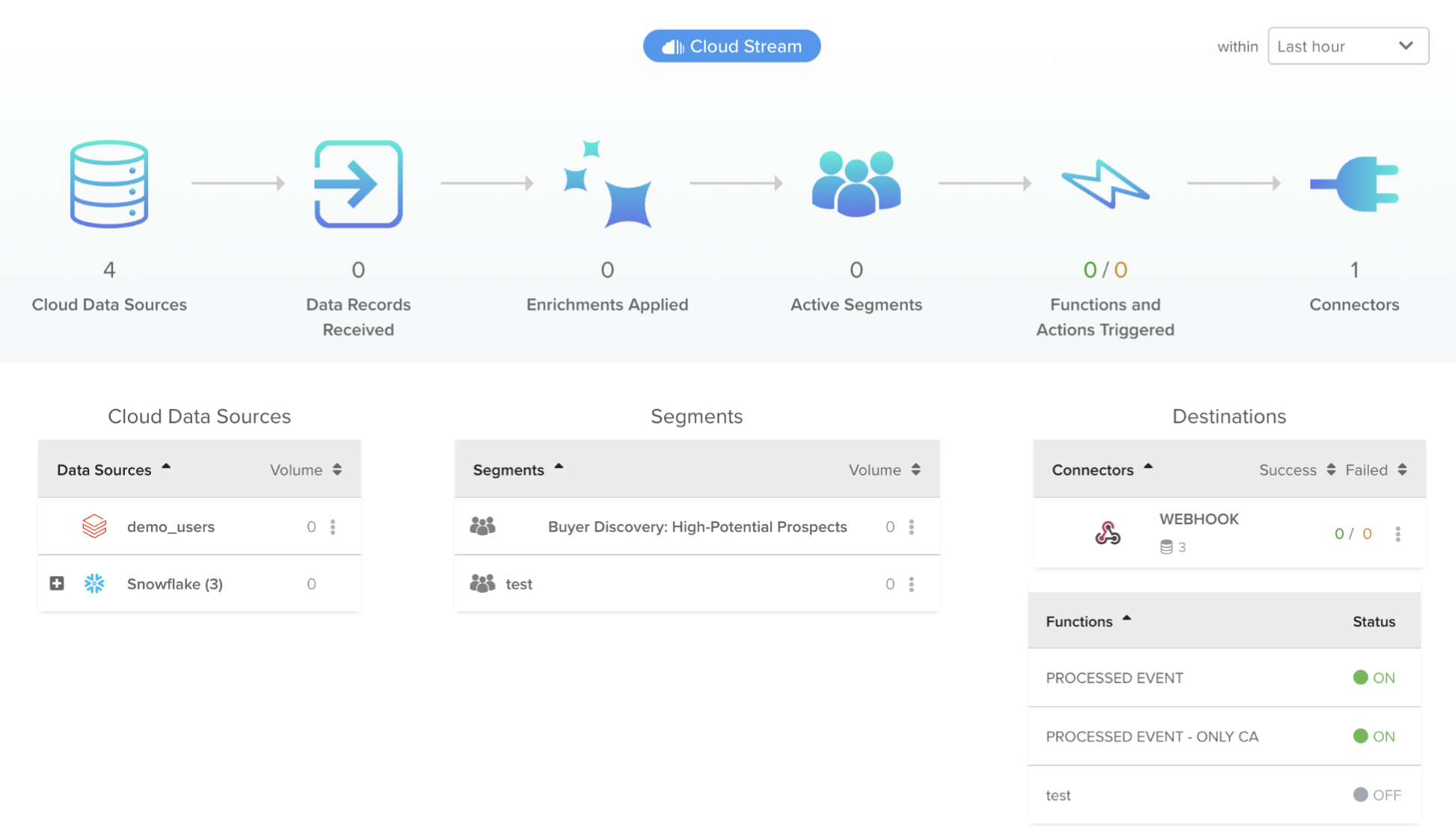
The CloudStream data supply chain dashboard lists the following information:
- The number of cloud data sources configured.
- The number of data records received.
- The number of enrichments applied.
- The number of active segments.
- The number of functions and connector actions triggered.
- The number of connectors configured.
Tables list the cloud data sources, segments, and destinations (connectors and functions) configured in the profile.
Data sources
Data sources are defined connections to your data cloud, such as Snowflake or Databricks. CloudStream connects to these data sources to retrieve and activate segments without storing the data in Tealium. This lets you work with large datasets directly from the cloud, leveraging the power of your existing data infrastructure.
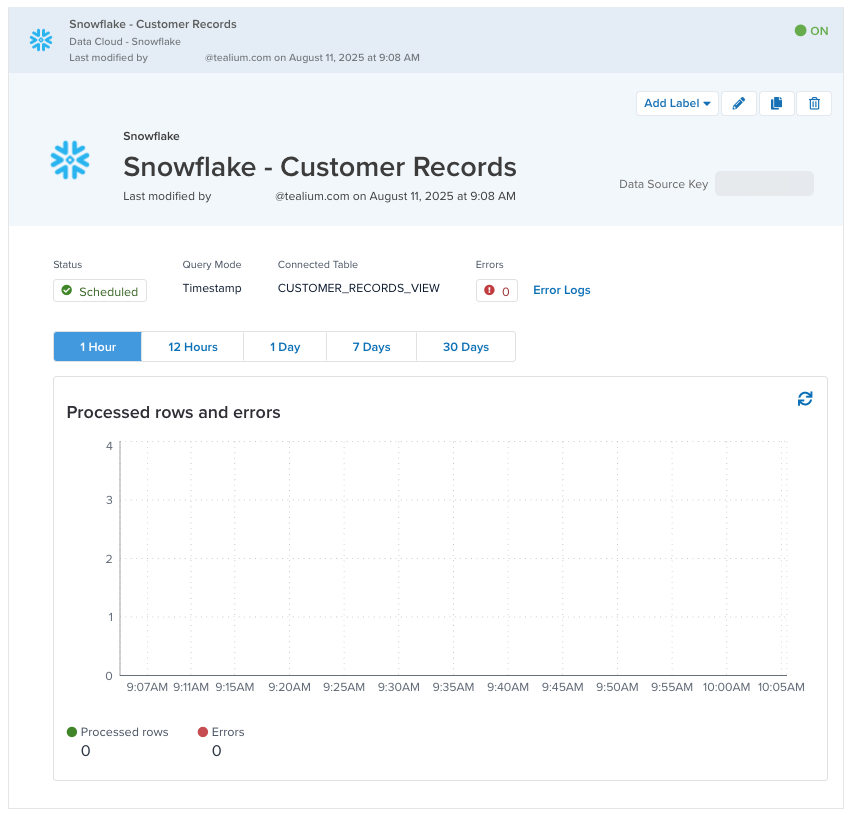
You can connect to up to 10 data sources in a profile.
CloudStream data sources are designed to work directly with data stored in a data cloud. Data remains in the data cloud and is only temporarily imported for activation through connectors, without being stored in Tealium.
Each data source can connect to a single view or table at a time. If you need to connect to multiple tables or views from a data cloud, configure a separate data source for each table or view.
If you want to combine data from multiple tables into data records that CloudStream can read in a segment, you need to join the tables or views in the data cloud into a single table or view and then use that joined table as the segment data source.
CloudStream only supports cloud data sources.
For more information, see Manage CloudStream data sources.
Cloud attributes
Cloud attributes are defined when you create a data source in CloudStream. As you connect to a table in your data cloud, CloudStream analyzes the table’s columns, determines their data types, and generates corresponding cloud attributes. You can review and adjust these attribute mappings during the data source setup process to ensure they align with your activation needs.
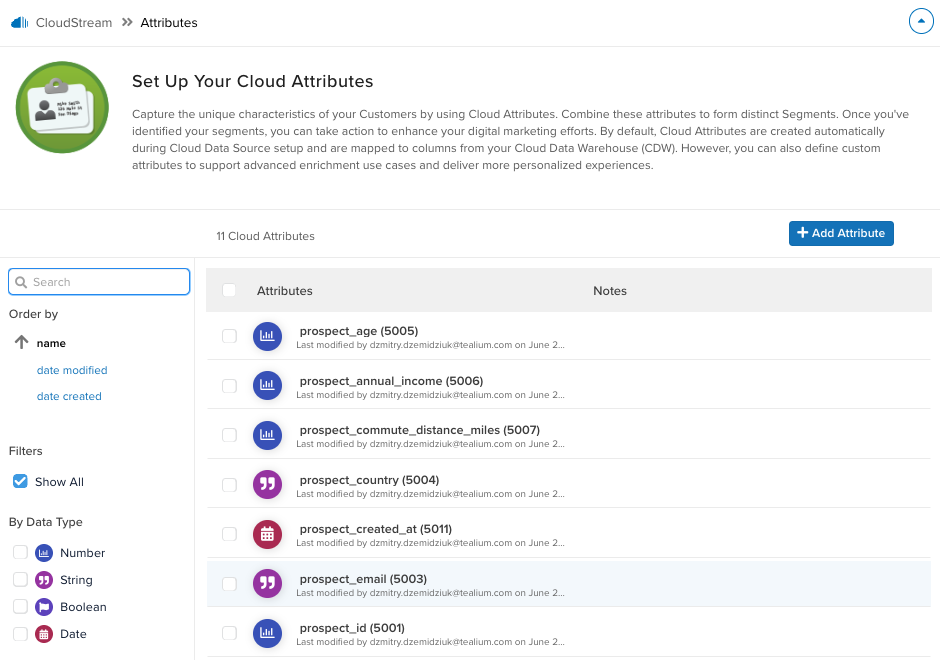
Cloud attributes are identical to event attributes in structure and behavior, except that they cannot be marked as restricted data and CloudStream does not contain preloaded attributes.
If you need more than 500 attributes in a profile, contact your Customer Success Manager.
For more information, see Cloud attributes.
Segments
Segments are groups of users or entities that meet a set of conditions based on the cloud attributes defined in your data source. Segments in CloudStream are not persisted in the system and are only dynamically evaluated in real time while data is imported from your data cloud and activated through connectors.
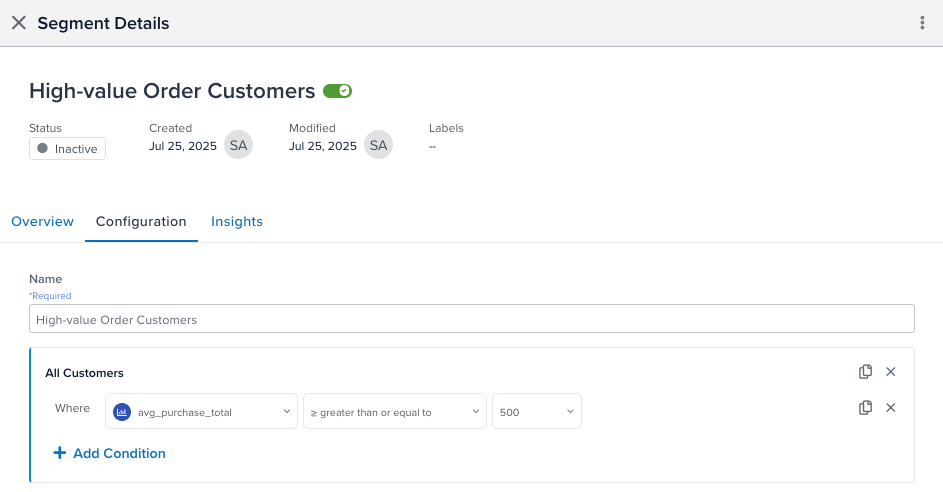
For more information, see Manage CloudStream segments.
Segments with multiple data sources
You cannot directly join multiple data sources within CloudStream. However, you might want to combine multiple data sources into a segment that has a shared purpose, such as identifying high value customers or high potential prospects.
For example, suppose you want to create a single segment to find high potential prospects for buying a car from a prospects table and from a table of people who have taken a test drive. First, create a segment that includes each of these data sources. Then, set a filter for the prospects, use an OR condition, and set another filter for the test drive participants.
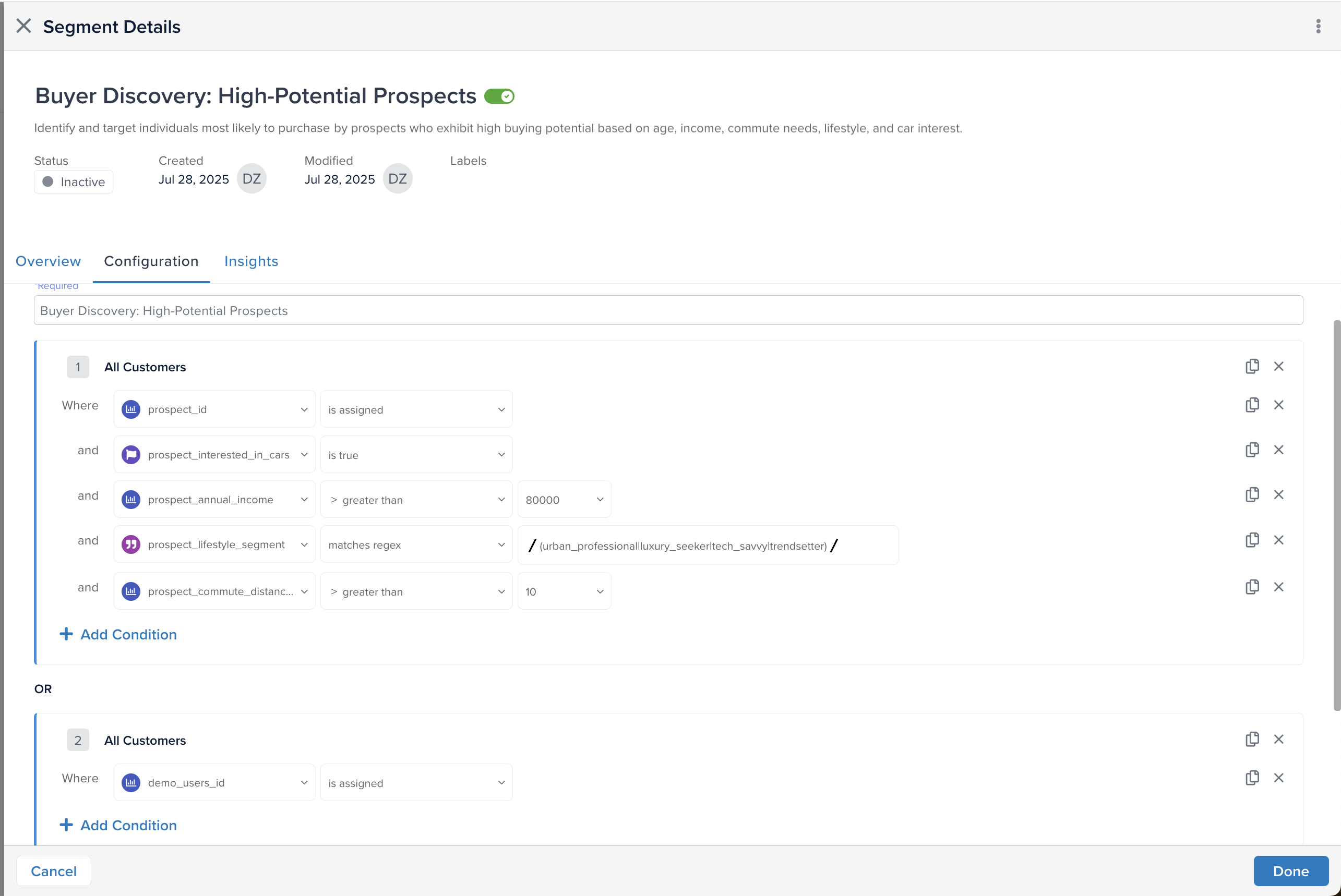
Activations
Activate a segment by delivering it to a destination using a function or a connector action. Functions allow you to process and transform data before activation, while connector actions send the data directly to marketing, analytics, or advertising platforms. Activations are the process of delivering segments to your marketing, analytics, and advertising platforms. You can set activations through connector actions or functions.
You can output a segment to multiple connector actions or functions. However, each configured activation can only use data from one data source. If you want to activate data from additional data sources through an activation, configure a separate action or function for each data source.
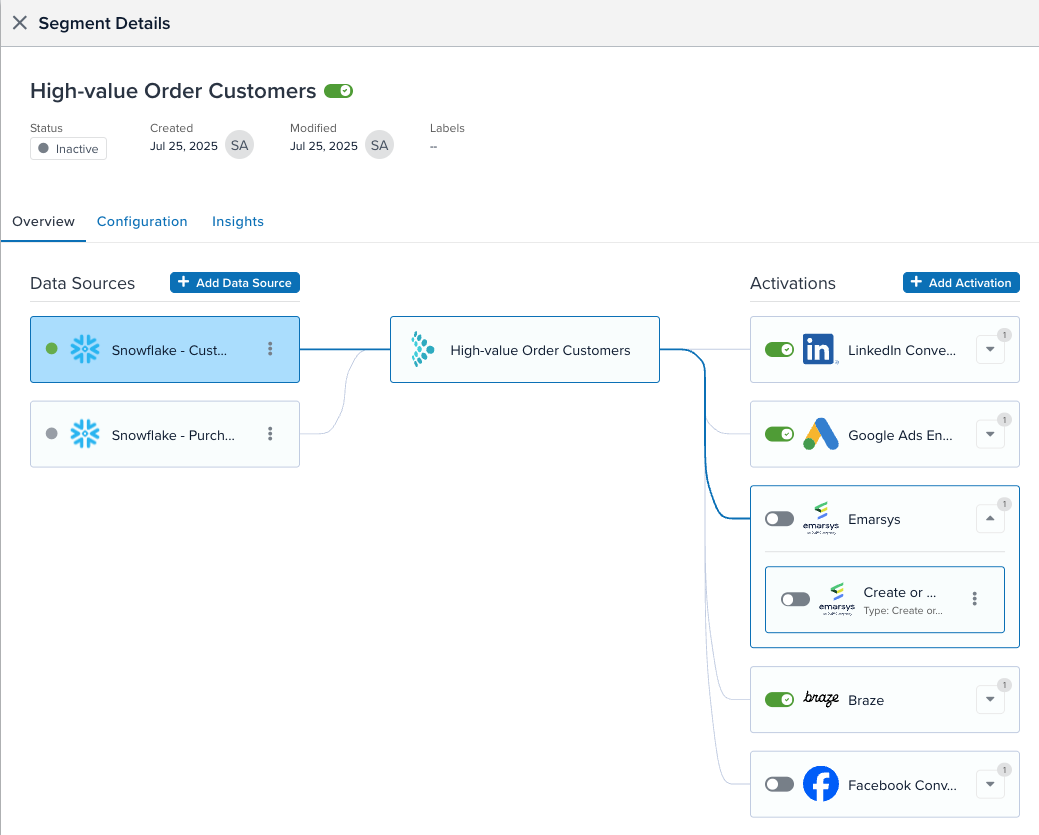
For more information, see Manage CloudStream connectors and About data record functions.
Comparison
The key differences between CloudStream, EventStream, and AudienceStream are:
| Feature | CloudStream | EventStream / AudienceStream |
|---|---|---|
| Data Source | Data cloud (Snowflake, Databricks) | Data cloud, web, mobile, server, API events |
| Data Storage | No data stored in Tealium | Data loaded and stored in Tealium (Visitor profiles and DataAccess) |
| Segment Persistence | Dynamic, not persisted | Persisted in visitor profiles |
| Activations | AudienceStream connectors and functions | AudienceStream and EventStream connectors and functions |
| Connector Actions | Separate for each data source | Multiple data sources per action. |
| Primary Use Case | Batch/warehouse activation | Real-time processing and activation |
The following workflow diagram shows the general differences between visitor data, event data, and cloud data in Tealium:
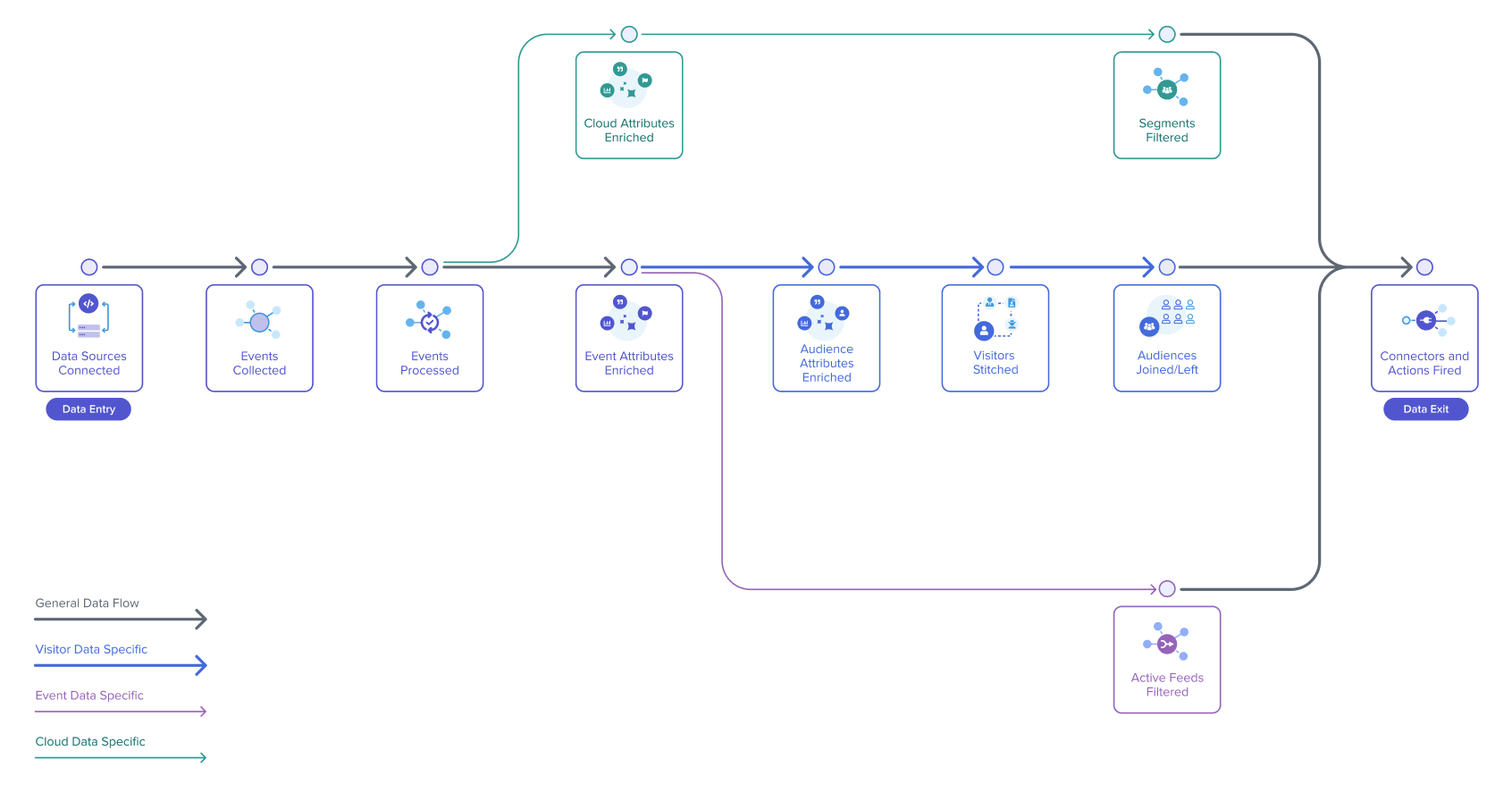
This page was last updated: October 31, 2025